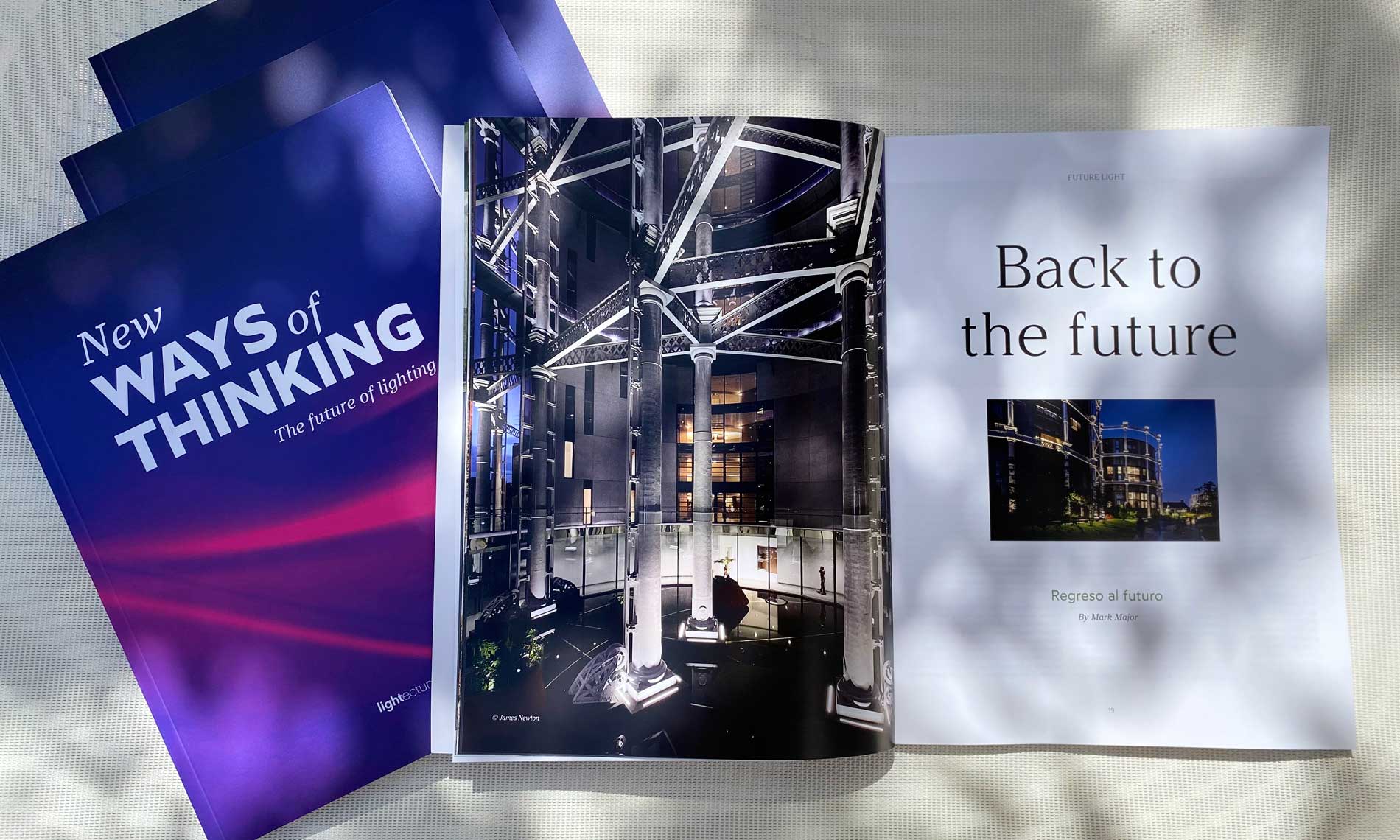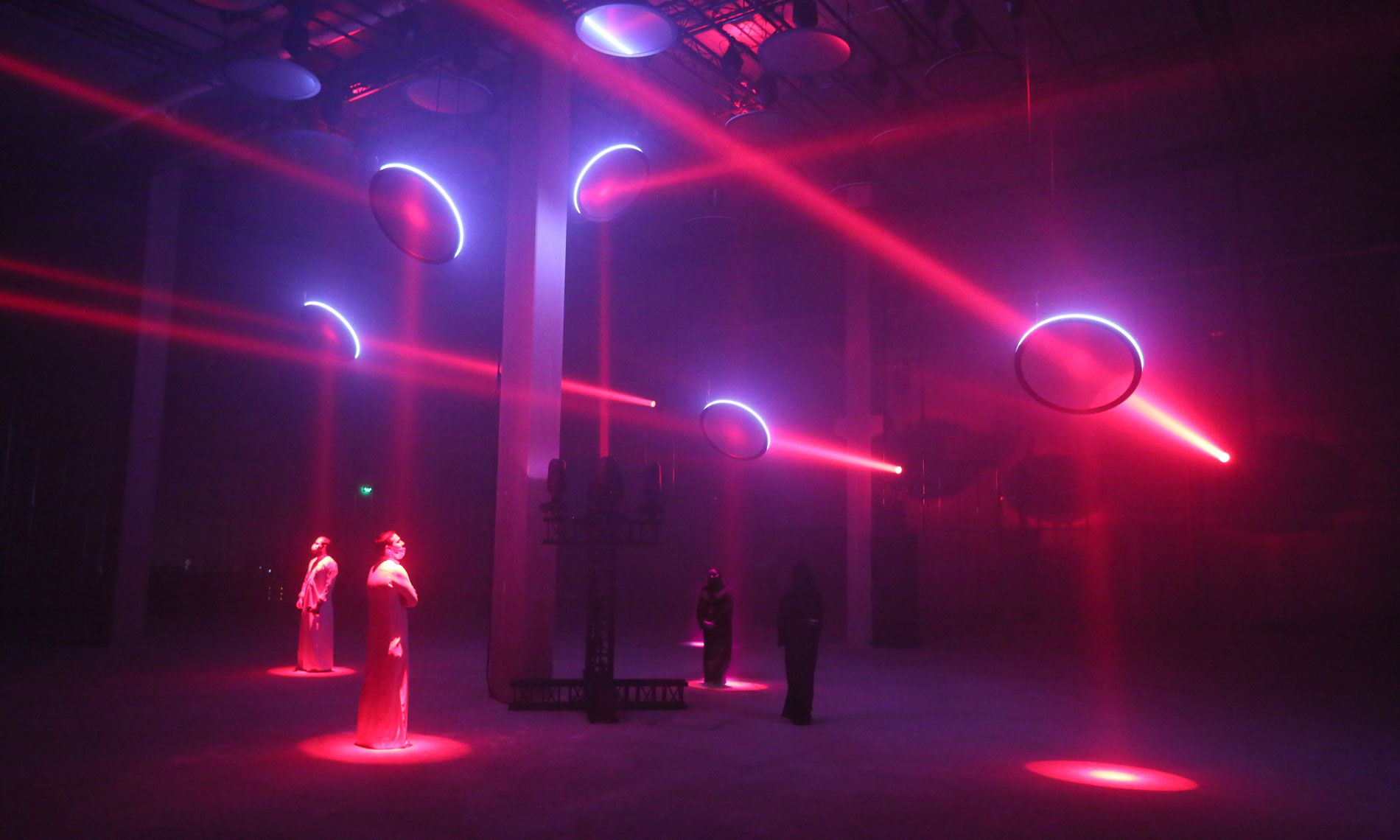
Last week Berlin hosted the IALD Enlighten Europe after 5 years without being able to hold this event due to the pandemic.

The tickets were completely sold out and the energy that was breathed in the Café Moskau was like the first day of school after a long summer. Professionals from more than 38 countries gathered in the German capital to share this essential experience for light lovers.

Friday began with lots of hugs, smiles, excitement and, as IALD President Mônica Luz Lobo conveyed, a great desire to learn from those speakers who were so generously going to share projects and research.

The keynote speaker started strong
Christopher Bauder left the audience speechless after showing some of the artistic work produced by his multidisciplinary team based in Berlin. Without half measures and with great detail, he showed the entrails of his most emblematic projects, among which we should highlight: Lichtgrenze, an ode to the fall of the wall on its 25th anniversary, Skalar, a beautiful game between mirrors and light on a large scale and TonLeiter, an installation in the form of an interactive staircase with which the viewer becomes a musical composer.

In the interview conducted by Lightecture after the presentation, Christopher acknowledges that for him, what is really rewarding is the experience of the public and their unexpected reinterpretation of their work.

Natural light, the protagonist of the event
The enhancement of natural light has been a transversal theme in most of the IALD presentations. Approached from various perspectives such as health or energy saving, all the speakers agree that this resource should take a more central position in architectural projects. Mônica Luz Lobo commented in one of her speeches that even the choice of the location for the event had been derived from the need to enjoy light in its purest state. The attendees appreciated this wise decision, not only in the moments of rest in which the natural light surely helped the interaction between them, but also in the presentations where all the rooms had large windows to the outside.

More with less. Oxymoron or challenge?
The always interesting Keith Bradshaw, CEO and co-owner of Speirs Major, introduced attendees to his new approach to the design process. In this age of impatience where we find clients with higher expectations, more knowledge and access to images, more complex solutions, and more code, Keith proposes to move from additive to subtractive design. This way of designing, which does not imply dark spaces, refers more to an aesthetic and technological simplification as well as a reduction in the number of solutions provided to the client. He also proposes leaving the extravagance for the virtual worldin which viewers can enjoy the beauty of the complex through their devices without harming the environment.

Illuminating the natural heritage
The world of lighting designers may represent one of the sectors of professionals most passionate about their work. But if we had to choose just one person to exemplify this statement, it would be Chiara Carucci. In her presentation on the lighting of the Collepardoand Pastenacaves, Chiara showed how involvement, passion, collaboration and a clear common goal are the keys to successfully managing a multi-stakeholder team. In this case, the objective was to convert a lousy lighting installation into a project that respects wildlife, while simultaneously promoting visits to the caves. Another success story for the Italian designer.

What light parameters we measure and why
Many times we follow default protocols simply because we have been working in a certain way for years. Kevan Shaw, founder of KSLD, proposed in his speech a review of our own practices with the relationship between efficiency and quality in the spotlight. It is true that we need to maintain low energy consumption in our buildings, but this is not something that is going to be achieved simply by prescribing luminaires with LED technology. In fact, Kevan showed how electricity consumption for lighting had skyrocketed in recent years, even when the switch to this new technology was carried out. Kevan reminded the audience that a sustainable design is not just a matter of using efficient lighting, it is also necessary to stop wasting light by placing it where it is needed and of course, that the one we use is of quality.

We reveal with light, what deserves to be seen. Inspired by painting
Charles Stone from FMS, won over the American public with statements as resounding and shared as «we can and should live in a world that is both green and beautiful.» His simplicity and oratory power made the message sink deeply. “We must consider darkness in our design process, as we reveal the important parts of the story with our light, like in paintings.”
Projects such as Embry Riddle Aeronautical Universityand the National Museum of African American History and Culture in Seattlewere practical examples of his theoretical proposals.

Sustainable and eco-friendly light does not exist
A panel of experts appeared before an audience that could not fit in the room to talk about the need for radical changes in outdoor night lighting. Philip Lentz CEO of the DL studio, Dr. Annette Rabea and Klaus-Peter Siemssen CEO of Seluxagreed on the need to modify the regulations and lower the light flux levels in order to have more adequate night lighting. The public affirmed in a virtual survey that these modifications should be carried out urgently by task forces made up of environmental engineers, lighting designers, government representatives and luminaire manufacturers. Dean Skira highlighted the interdependence between lighting designers and manufacturers to create a better future for all.

Electric refugees. The darkness when it responds to a situation of poverty
Lebanon is facing a crisis situation where 6 million people light up at night with candles due to power cuts. This light poverty leads to many other problems of corruption and insecurity that it is not known how long they will last. Cherine Saroufin presented a reality unknown to many in which certain blows of hope in the form of NGOs bring some light to the darkness that people with few economic resources live. A hard blow of reality for the privileged visions that had spent two days hoisting the absence of light from the point of view of sustainability. “In Lebanon we are sustainable because we have no other choice,” says Cherine, “We are, electric refugees.”

Lighting cross talks
Especially interesting were the meeting tables in which professionals were able to express their needs to manufacturers while these, in turn, showed them their product and the latest developments.

Deeply grateful
From Lightecture we thank everyone from the organization specially Mônica Luz Lobo IALD president, Sharon Stammers and Martin Lupton Co-founders of Light Collective and of course all the sponsors who have co-created an open space for debate and the sharing of ideas and information so relevant to all professionals from the lighting design industry.

We also want to thank Chiara Carucci, Associate IALD, from Italy; Anna Sbokou, IALD, from Greece; Dean Skira, IALD, from Croatia; and Martina Frattura, Junior Associate IALD, from Portugal for their contribuiton to the newly established IALD Southern Europe chapter.

Next meeting in Europe
The next IALD Enlighten Europe will be chosen from among all the participants in the survey that will be sent from the organization.
We hope to see you all there. Until then, may the shadow guide you and the light be with you.







